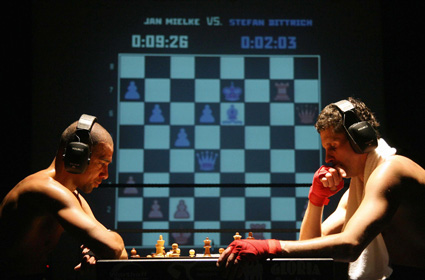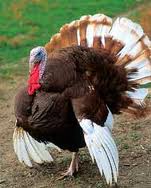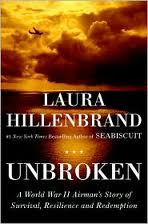What is wrong with the modern literary novel? Why is it so worthy and dull? Why is it so anxious? Why is it so bloody boring?
Well, let’s go back a bit first. Two and a half thousand years ago, at the time of Aristophanes, the Greeks believed that comedy was superior to tragedy: tragedy was the merely human view of life (we sicken, we die). But comedy was the gods’ view, from on high: our endless and repetitive cycle of suffering, our horror of it, our inability to escape it. The big, drunk, flawed, horny Greek gods watched us for entertainment, like a dirty, funny, violent, repetitive cartoon. And the best of the old Greek comedy tried to give us that relaxed, amused perspective on our flawed selves. We became as gods, laughing at our own follies.
Many of the finest novels—and certainly the novels I love most—are in the Greek comic tradition, rather than the tragic: Rabelais, Cervantes, Swift, Voltaire, and on through to Joseph Heller’s Catch-22 and the late Kurt Vonnegut’s Slaughterhouse 5.
Yet western culture since the middle ages has overvalued the tragic and undervalued the comic. We think of tragedy as major, and comedy as minor. Brilliant comedies never win the best film Oscar. The Booker prize leans toward the tragic. In 1984, Martin Amis reinvented Rabelais in his comic masterpiece Money. The best English novel of the 1980s, it didn’t even make the shortlist. Anita Brookner won that year, for Hotel du Lac, written, as the Observer put it, “with a beautiful grave formality.”
 The fault is in the culture. But it is also internalised in the writers, who self-limit and self-censor. If the subject is big, difficult and serious, the writer tends to believe the treatment must be in the tragic mode. When Amis addressed the Holocaust in his minor novel Time’s Arrow (1991), he switched off the jokes, and the energy, and was rewarded with his only Booker shortlisting.
The fault is in the culture. But it is also internalised in the writers, who self-limit and self-censor. If the subject is big, difficult and serious, the writer tends to believe the treatment must be in the tragic mode. When Amis addressed the Holocaust in his minor novel Time’s Arrow (1991), he switched off the jokes, and the energy, and was rewarded with his only Booker shortlisting.
But why this pressure, from within and without? There are two good reasons. The first is the west’s unexamined cultural cringe before the Greeks. For most of the last 500 years, Homer and Sophocles have been held to be the supreme exponents of their arts. (Even Homer’s constant repetition of stock phrases like “rosy-fingered dawn” and “wine-dark sea” are praised, rather than recognised as tiresome clichés.)
The second reason is that our classical inheritance is lop-sided. We have a rich range of tragedies—Sophocles, Aeschylus and Euripides (18 by Euripides alone). Of the comic writers, only Aristophanes survived. In an age of kings, time is a filter that works against comedy. Plays that say, “Boy, it’s a tough job, leading a nation” tend to survive; plays that say, “Our leaders are dumb arseholes, just like us” tend not to.
More importantly, Aristotle’s work on tragedy survived; his work on comedy did not. We have the classical rules for the one but not the other, and this has biased the development of all western literature. We’ve been off-centre ever since.
But of course Europe in the middle ages was peculiarly primed to rediscover tragedy: the one church spoke in one voice, drawn from one book, and that book was at heart tragic. All of human history, from the creation, was a story that climaxed with the sadistic murder of a man by those he was trying to save, whose fatal flaw was that he was perfect in an imperfect world. The nicest man ever, he is murdered by everybody. Not only is this tragedy; it is kitsch tragedy, overegged, a joke. It cannot survive laughter, it is too vulnerable to it. And the Bible, from apple to Armageddon, does not contain a single joke.
The church spoke with one voice because it was on such shaky foundations. The largest and richest property empire of all time had somehow been built on the gospel of the poor. All other voices had to be suppressed, even dissenting gospels. Only once a year, in carnival, on the feast of fools, could the unsayable be said. A fool was crowned king, and gave a fool’s sermon from the altar that reversed the usual pieties. But these speeches could not be written down or circulated. They existed in the air, for a day, and were gone. By the late middle ages, the paralysis was almost total. If you change one word of the old Vulgate Bible, the whole thing comes under suspicion. All you could hear was a single voice reading a single book, the Vulgate, a Latin translation from a Greek original. When Erasmus finally retranslated the Bible, threw it open to interpretation, he caused a crisis that ultimately tore the church apart.
The problem is not specific to Christianity. Islam has always had a problem with comedy at its expense, as Salman Rushdie showed in The Satanic Verses. In Medina, in year two of the Hijra migration, with Mecca not yet fallen, the Prophet asked the faithful to kill the Jewish-Arab poet Ka’b ibn al-Ashraf for reciting his poems satirising the Prophet (and joking about Muslim women). The faithful obliged.
It is interesting, but unsurprising, that all the satirists murdered and allegedly murdered on Muhammad’s orders were, among other things, Jewish. With its vigorous tradition of Talmudic debate, and with no Jewish state to stifle or control that debate, Judaism never fell into the paralysis of the younger monotheisms. It was, to put it mildly, never state-approved. Judaism, excluded from the establishment in so many Christian and Muslim nations, has consequently produced a high proportion of the world’s great satirists, comedians and novelists. And, in Yiddish, it produced perhaps the world’s first compulsively comic, anti-authoritarian language, with its structural mockery of high German.
In Christian Europe, the Renaissance rediscovery of the classical texts occurred when the habit of submission to authority was at its most extreme. When printing was invented, no one thought to use it for anything other than the Christian Bible, for that was the myth of Europe, the one true myth.
As writers began moving cautiously away from the theological shore, they still felt the need for a holy book to guide them, to tell them how to write. Aristotle’s Poetics provided that. If you wanted to write tragedy or epic, here were the rules. You need not think for yourself. It’s particularly sad to see the narrowness of subject matter and style in the pictorial art of the era—Madonna after pink-cheeked Madonna, saint after martyred saint. So much talent, all wasted doing the Renaissance equivalent of Soviet realist art.
And then something astonishing happened: the invention of the novel privatised myth, because the novel, invented after Aristotle, did not have a holy book. The novelist was on his own. Sometimes he’s even a she. There were no rules. The chaos of carnival had found its form. The fool’s sermon could be published, could live on. All you learned from Rabelais or Cervantes was to mock everything sacred, all that went before. Including them.
 And the reaction was fierce. Rabelais was jailed for his wild comedies. Voltaire, praised for his early tragedies, was jailed for his satires. Cervantes apparently started Don Quixote in a debtors’ prison. All had to flee town on occasion for fear of worse. Printing had to be done abroad, in secret, and the books smuggled to their destinations. The early years of the novel look remarkably like a guerrilla war, as pro-Bible forces try to put down the insurgency of the novel across Europe. Both were fighting for the same piece of territory: the territory inside your head.
And the reaction was fierce. Rabelais was jailed for his wild comedies. Voltaire, praised for his early tragedies, was jailed for his satires. Cervantes apparently started Don Quixote in a debtors’ prison. All had to flee town on occasion for fear of worse. Printing had to be done abroad, in secret, and the books smuggled to their destinations. The early years of the novel look remarkably like a guerrilla war, as pro-Bible forces try to put down the insurgency of the novel across Europe. Both were fighting for the same piece of territory: the territory inside your head.
Now a man could invent his own myth and spread it across the world. And the reader, head bowed over the novel, could have a vision without religion: a full vision, transmitted through space and time by marks on paper, using the novelist's arts.
 Monday, January 10, 2011 at 2:27PM
Monday, January 10, 2011 at 2:27PM 
 Kathy |
Kathy |  Post a Comment |
Post a Comment |  The fault is in the culture. But it is also internalised in the writers, who self-limit and self-censor. If the subject is big, difficult and serious, the writer tends to believe the treatment must be in the tragic mode. When Amis addressed the Holocaust in his minor novel Time’s Arrow (1991), he switched off the jokes, and the energy, and was rewarded with his only Booker shortlisting.
The fault is in the culture. But it is also internalised in the writers, who self-limit and self-censor. If the subject is big, difficult and serious, the writer tends to believe the treatment must be in the tragic mode. When Amis addressed the Holocaust in his minor novel Time’s Arrow (1991), he switched off the jokes, and the energy, and was rewarded with his only Booker shortlisting. And the reaction was fierce. Rabelais was jailed for his wild comedies. Voltaire, praised for his early tragedies, was jailed for his satires. Cervantes apparently started Don Quixote in a debtors’ prison. All had to flee town on occasion for fear of worse. Printing had to be done abroad, in secret, and the books smuggled to their destinations. The early years of the novel look remarkably like a guerrilla war, as pro-Bible forces try to put down the insurgency of the novel across Europe. Both were fighting for the same piece of territory: the territory inside your head.
And the reaction was fierce. Rabelais was jailed for his wild comedies. Voltaire, praised for his early tragedies, was jailed for his satires. Cervantes apparently started Don Quixote in a debtors’ prison. All had to flee town on occasion for fear of worse. Printing had to be done abroad, in secret, and the books smuggled to their destinations. The early years of the novel look remarkably like a guerrilla war, as pro-Bible forces try to put down the insurgency of the novel across Europe. Both were fighting for the same piece of territory: the territory inside your head.

